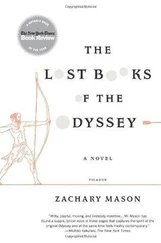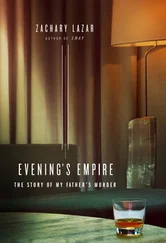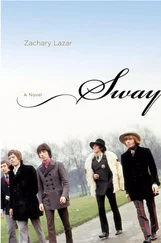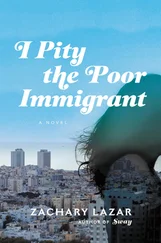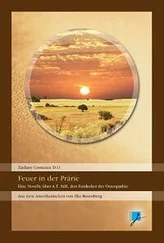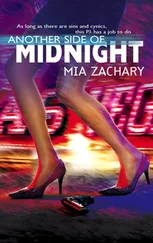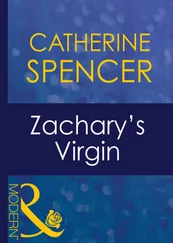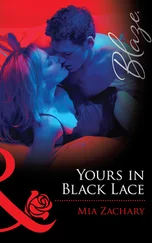“Nada. Nada means nada. I’m not well, amigo. I am nada!”
“Ay, ay, ay, senor. Why joo don’t eat sonthing, drink una cerveza and everything will be all right.”
“Give me one carne asada gordita . No onions, please.” The Mexican writes my order down with a pencil and hands it to the invisible cook behind him. I open the dirty fridge and pull out a green bottle of beer. I drink two of those while my food is cooking. Then, I attack my fat gordita hungrily. Pieces of meat, lettuce, diced tomatoes, and bell peppers fall from the edges, but I gather them with my fingers from the greasy table and shove them into my mouth. Tasty. I feel much better when I leave the joint.
I get into my car and open the windows. My belly is full. Right next to my spot, a rusty brown Datsun comes to a halt with a screech. Behind the wheel is a stringy, fortyish guy with a goatee in a black muscle shirt. Two scruffy bleached-blonde girls, high school age, grin in the back seat. The three of them stare at me.
“Dude,” says the Goatee. “Your car smells good. Very good.”
“Really?” I say as I turn on the ignition.
“You can smell it from outside.” One of the girls licks her upper lip and passes a joint to the other one. Both of them keep staring at me and grinning. Goatee’s hair is short in the front and parted down the middle, but long in the back, falling over his shoulders. It is definitely an odd attempt at a mullet. Some of his teeth are bad and some missing. “It smells like. .” There is something overtly sexual and sickening about this trio. With my right hand, I feel the car seat for my sun-heated camera, pull it up in front of my face, and quickly take a few shots. All three of them burst into wild laughter. I shoot again. “You wanna take pictures, huh, dude?! You wanna take pictures?! Well, how about this!” The Goatee holds up the blondish head of a third girl whom I hadn’t noticed before because she had been bent down in his lap. Her lipstick is smeared. She has last night’s make up on and her look is as blank as the sky above this empty parking lot. I take one last shot while the two girls laugh hysterically and jump out of the car, running toward the cantina. The Goatee flips a tattooed finger at me and pushes the third girl’s head back down. I step on the gas pedal. The bunch of coconut air-freshener trees dangle beneath the rear view mirror — the smell I wanted to chase Stella away with.
*
Stella came home from France. On our way back from the airport, she opened the car window, took out a packet of menthols, and lit one. She had started smoking. I tried to say something about how unnecessary this bad habit was, but she interrupted me with a gesture. She felt like smoking and that was that. I could hardly swallow my exasperation. I felt offended.
I tried to convince myself that all this was temporary. She also made efforts to keep up a somewhat civilized coexistence; we were both learning to live pragmatically, like everybody else around us.
She started buying larger and larger canvases for her paintings — which I had less and less of a desire to see. When I actually had to, I found less and less meaning in them. In the beginning, everything she painted was close to me, and we talked about her art for hours. As time passed, though, her paintings became less interesting and more incomprehensible. Her last pieces were nine-foot squares in gray oil which told me nothing. Stella’s first exhibit in California was a group show with one other painter and two sculptors. It was in a small, new gallery in San Clemente. On the day of the opening, I was busy conducting a site visit in Earlstown, Iowa, where, while tracking files and the database, I found two somewhat significant violations of the protocol. From the hotel room that night, I had a view of vast corn fields. The sky over them was leaden. It was the beginning of fall in Iowa. I watched the tall corn, ready for harvest, and wondered whether we, too, had our seasons. Does love have seasons?
*
I arrive in the Valley of the Sun — I guess that’s what they call Phoenix — in the late afternoon. I park in front of a tourist information center and get out of the car to stretch my stiff body, pick up a map of the city, and use the telephone book. In it, I find one of the few surviving professional photography stores that carry chemicals for black and white photography and processing equipment. I call to make sure they’re still in business. They are. Just before closing time, I manage to find the store. The owner is an old-timer wearing a blue vest and thick prescription glasses, with a crooked mouth and dwarf’s beard, who scuffles amidst the shelves to the sound of his flip-flops. I buy Kodak film developer D-76, Ilford’s rapid fixing solution and stop bath, a canister, a few one-gallon bottles, and some film negative sleeves. For a moment, I hesitate as to whether I’ll need a thermometer like the one I used before (twenty-five dollars), but pass on the idea. I pay and leave with something vaguely resembling a smile on my face. I stop on the sidewalk and see off the last third of the sun setting behind the brick building on the west side of the street. Suddenly, the temperature drops. I cross the street and enter a supermarket. There, I buy a kitchen thermometer for five bucks, clothes pins (which I will use to dry negatives and pictures), several Toblerones, and a bottle of scotch.
I find a hotel close to the freeway. My room is on the third floor, overlooking the dense trail of red and white car lights. After the Mexican food, I’m still full. I start in with the chemicals. I dissolve the chemical powder in water and get ready to develop the rolls of film. I go into the bathroom. I lay out my improvised tools, memorize where everything is, and turn off the lights. In the darkness, I crack open the first roll of film with my car key — God, it’s been a while since I’ve done this — and I feel my hands trembling with excitement. I take a deep breath and try to relax a little. The lid of the first roll drops to the bathroom floor. I grope for the film, caress it, pull it, unwind it and let it hang down. I use my teeth to tear it from the spool. I love this delicate moment of violence. The instant when, with a short bite — I always use my teeth, never scissors — I free the film from the prison of the cassette roll. I fumble in the dark for the developing tank and start rolling the film onto the reel. My heart beats faster. I manage to load the reel, place it in the tank, and close it. I take another breath and make sure that everything is going well. I turn on the light. I pour some developer into the container and start the process. The first fifty-five seconds I shake the canister like a martini. I let the film rest for thirty seconds, and then shake it for five seconds each minute. For twelve minutes. I pour out the used developer, stop-bath it, turn on the faucet, and let the water run into the canister to wash it. I fix the film for another twelve minutes then let the water run over it for a long time. I continue with the hypo-bath, washing it again. I open the tank to check on the result and my heart starts pounding. Here they are — the negatives of everything I shot today. Here they are. I lift the film up to the bathroom light and stare at the little rectangles for a long moment. At a particular angle, and only for me, they come to life. I pin up the film to dry and jump in the shower.
My motel is too cheap to have a restaurant. Across from my room however, I can make out the big red “M” of a Marriot shining in the inky sky, so I decide to check it out. My plans for the night include a few martinis. I go out and inhale the desert night. I cross the enormous parking lot and go into the hotel. I nod to the girl at the reception desk and find the lobby bar, lush with plastic greenery and despicably lit like a small-town bus station.
Читать дальше

